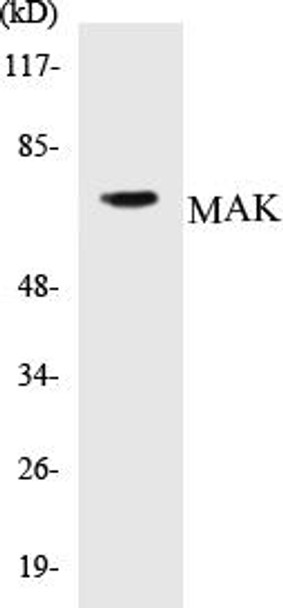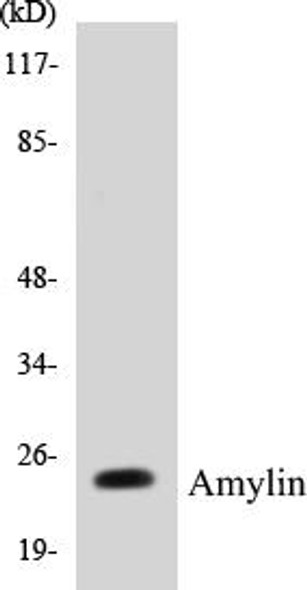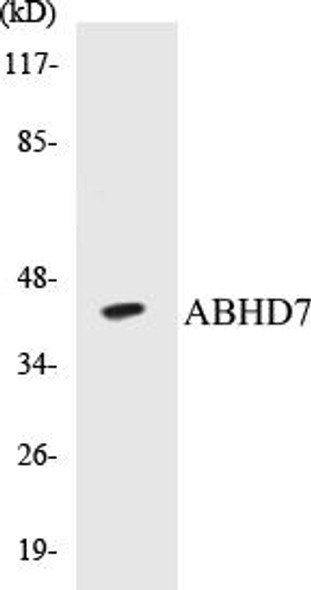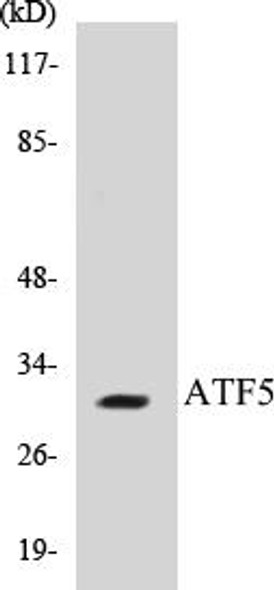Description
MAK Colorimetric Cell-Based ELISA Kit
The MAK Colorimetric Cell-Based ELISA Kit from AssayGenie is a powerful tool for researchers looking to accurately detect angiogenin levels in human serum, plasma, and cell culture supernatants. With its high sensitivity and specificity, this kit provides reliable and reproducible results for a wide range of research applications.Angiogenin is a key protein involved in angiogenesis, playing a crucial role in blood vessel formation and cell proliferation.
Its implications in conditions such as cancer, cardiovascular diseases, and neurodegenerative disorders make it a vital biomarker for studying these conditions and developing potential therapies.Trust the MAK Colorimetric Cell-Based ELISA Kit from AssayGenie to help you advance your research and uncover important insights into angiogenin levels and their role in various diseases.
| Product Name: | MAK Colorimetric Cell-Based ELISA |
| Product Code: | CBCAB00739 |
| ELISA Type: | Cell-Based |
| Target: | MAK |
| Reactivity: | Human, Mouse, Rat |
| Dynamic Range: | > 5000 Cells |
| Detection Method: | Colorimetric 450 nmStorage/Stability:4°C/6 Months |
| Format: | 96-Well Microplate |
The MAK Colorimetric Cell-Based ELISA Kit is a convenient, lysate-free, high throughput and sensitive assay kit that can detect MAK protein expression profile in cells. The kit can be used for measuring the relative amounts of MAK in cultured cells as well as screening for the effects that various treatments, inhibitors (ie siRNA or chemicals), or activators have on MAK.
Qualitative determination of MAK concentration is achieved by an indirect ELISA format. In essence, MAK is captured by MAK-specific primary antibodies while the HRP-conjugated secondary antibodies bind the Fc region of the primary antibody. Through this binding, the HRP enzyme conjugated to the secondary antibody can catalyze a colorimetric reaction upon substrate addition. Due to the qualitative nature of the Cell-Based ELISA, multiple normalization methods are needed:
| 1. | A monoclonal antibody specific for human GAPDH is included to serve as an internal positive control in normalizing the target absorbance values. |
| 2. | Following the colorimetric measurement of HRP activity via substrate addition, the Crystal Violet whole-cell staining method may be used to determine cell density. After staining, the results can be analysed by normalizing the absorbance values to cell amounts, by which the plating difference can be adjusted. |
| Database Information: | Gene ID: 4117, UniProt ID: P20794, OMIM: 154235, Unigene: Hs.446125 |
| Gene Symbol: | MAK |
| Sub Type: | None |
| UniProt Protein Function: | MAK: a protein kinase of the RCK family of kinases. It is expressed at high levels in the testis (primarily in germ cells), and in developing sensory epithelia. Localizes to the chromosomes during meiosis in spermatogenesis, specifically to the synaptonemal complex that exists while homologous chromosomes are paired. |
| UniProt Protein Details: | Protein type:Protein kinase, CMGC; EC 2.7.11.22; Nuclear receptor co-regulator; Kinase, protein; Protein kinase, Ser/Thr (non-receptor); CMGC group; RCK family Chromosomal Location of Human Ortholog: 6p24 Cellular Component: centrosome; midbody; nucleus; photoreceptor inner segment; photoreceptor outer segment Molecular Function:protein binding; transcription coactivator activity Biological Process: photoreceptor cell maintenance; protein amino acid autophosphorylation; protein amino acid phosphorylation Disease: Retinitis Pigmentosa 62 |
| NCBI Summary: | The product of this gene is a serine/threonine protein kinase related to kinases involved in cell cycle regulation. Studies of the mouse and rat homologs have localized the kinase to the chromosomes during meiosis in spermatogenesis, specifically to the synaptonemal complex that exists while homologous chromosomes are paired. Mutations in this gene have been associated with ciliary defects resulting in retinitis pigmentosa 62. Alternative splicing results in multiple transcript variants. [provided by RefSeq, Jan 2016] |
| UniProt Code: | P20794 |
| NCBI GenInfo Identifier: | 13432166 |
| NCBI Gene ID: | 4117 |
| NCBI Accession: | P20794.2 |
| UniProt Secondary Accession: | P20794,Q547D0, Q9NUH7, F1T0K6, G1FL29, |
| UniProt Related Accession: | P20794 |
| Molecular Weight: | 66,345 Da |
| NCBI Full Name: | Serine/threonine-protein kinase MAK |
| NCBI Synonym Full Names: | male germ cell associated kinase |
| NCBI Official Symbol: | MAK |
| NCBI Official Synonym Symbols: | RP62 |
| NCBI Protein Information: | serine/threonine-protein kinase MAK |
| UniProt Protein Name: | Serine/threonine-protein kinase MAK |
| UniProt Synonym Protein Names: | Male germ cell-associated kinase |
| Protein Family: | Makatoxin |
| UniProt Gene Name: | MAK |
| UniProt Entry Name: | MAK_HUMAN |
| Component | Quantity |
| 96-Well Cell Culture Clear-Bottom Microplate | 2 plates |
| 10X TBS | 24 mL |
| Quenching Buffer | 24 mL |
| Blocking Buffer | 50 mL |
| 15X Wash Buffer | 50 mL |
| Primary Antibody Diluent | 12 mL |
| 100x Anti-Phospho Target Antibody | 60 µL |
| 100x Anti-Target Antibody | 60 µL |
| Anti-GAPDH Antibody | 60 µL |
| HRP-Conjugated Anti-Rabbit IgG Antibody | 12 mL |
| HRP-Conjugated Anti-Mouse IgG Antibody | 12 mL |
| SDS Solution | 12 mL |
| Stop Solution | 24 mL |
| Ready-to-Use Substrate | 12 mL |
| Crystal Violet Solution | 12 mL |
| Adhesive Plate Seals | 2 seals |
The following materials and/or equipment are NOT provided in this kit but are necessary to successfully conduct the experiment:
- Microplate reader able to measure absorbance at 450 nm and/or 595 nm for Crystal Violet Cell Staining (Optional)
- Micropipettes with capability of measuring volumes ranging from 1 µL to 1 ml
- 37% formaldehyde (Sigma Cat# F-8775) or formaldehyde from other sources
- Squirt bottle, manifold dispenser, multichannel pipette reservoir or automated microplate washer
- Graph paper or computer software capable of generating or displaying logarithmic functions
- Absorbent papers or vacuum aspirator
- Test tubes or microfuge tubes capable of storing ≥1 ml
- Poly-L-Lysine (Sigma Cat# P4832 for suspension cells)
- Orbital shaker (optional)
- Deionized or sterile water
*Note: Protocols are specific to each batch/lot. For the correct instructions please follow the protocol included in your kit.
| Step | Procedure |
| 1. | Seed 200 µL of 20,000 adherent cells in culture medium in each well of a 96-well plate. The plates included in the kit are sterile and treated for cell culture. For suspension cells and loosely attached cells, coat the plates with 100 µL of 10 µg/ml Poly-L-Lysine (not included) to each well of a 96-well plate for 30 minutes at 37°C prior to adding cells. |
| 2. | Incubate the cells for overnight at 37°C, 5% CO2. |
| 3. | Treat the cells as desired. |
| 4. | Remove the cell culture medium and rinse with 200 µL of 1x TBS, twice. |
| 5. | Fix the cells by incubating with 100 µL of Fixing Solution for 20 minutes at room temperature. The 4% formaldehyde is used for adherent cells and 8% formaldehyde is used for suspension cells and loosely attached cells. |
| 6. | Remove the Fixing Solution and wash the plate 3 times with 200 µL 1x Wash Buffer for five minutes each time with gentle shaking on the orbital shaker. The plate can be stored at 4°C for a week. |
| 7. | Add 100 µL of Quenching Buffer and incubate for 20 minutes at room temperature. |
| 8. | Wash the plate 3 times with 1x Wash Buffer for 5 minutes each time. |
| 9. | Add 200 µL of Blocking Buffer and incubate for 1 hour at room temperature. |
| 10. | Wash 3 times with 200 µL of 1x Wash Buffer for 5 minutes each time. |
| 11. | Add 50 µL of 1x primary antibodies (Anti-MAK Antibody and/or Anti-GAPDH Antibody) to the corresponding wells, cover with Parafilm and incubate for 16 hours (overnight) at 4°C. If the target expression is known to be high, incubate for 2 hours at room temperature. |
| 12. | Wash 3 times with 200 µL of 1x Wash Buffer for 5 minutes each time. |
| 13. | Add 50 µL of 1x secondary antibodies (HRP-Conjugated AntiRabbit IgG Antibody or HRP-Conjugated Anti-Mouse IgG Antibody) to corresponding wells and incubate for 1.5 hours at room temperature. |
| 14. | Wash 3 times with 200 µL of 1x Wash Buffer for 5 minutes each time. |
| 15. | Add 50 µL of Ready-to-Use Substrate to each well and incubate for 30 minutes at room temperature in the dark. |
| 16. | Add 50 µL of Stop Solution to each well and read OD at 450 nm immediately using the microplate reader. |
(Additional Crystal Violet staining may be performed if desired – details of this may be found in the kit technical manual.)






